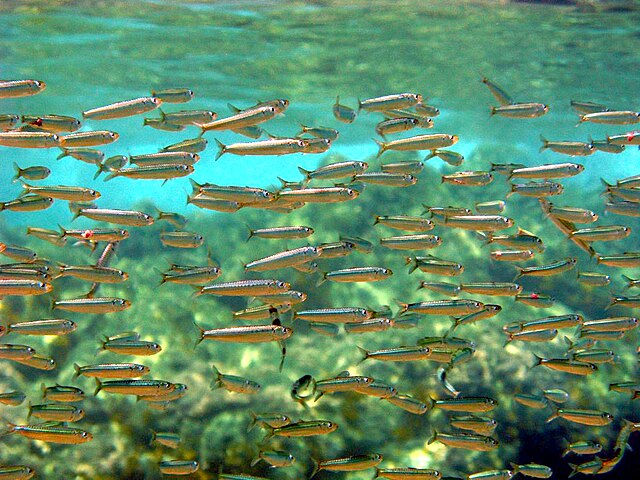The end of a 3-month ban in Zamboanga and Visayan Sea in mid-February 2025 could cool fish prices in PH, especially sardines.
Since quarter 4, 2024, the Philippines has been implementing a fishing ban on the southern seas to protect the sardine stock.
This lifting of the moratorium comes just a week after the Zamboanga del Sur fisheries got another ban on shellfish after algae contamination. A government advisory stated that shrimp and squid consumption should only occur after thorough washing of the seafood.
Sardines
Meanwhile, the supply of sardines could revamp owing to selective fishing conservation measures via the National Sardine Plan of 2020 to 2025.
The species is the cheapest source of PH’s sea protein and its catch volume represents 15% of the country’s annual fish landings.
The Zamboanga peninsula produces over 46% of the total national sardine catch or average 160,000 tonnes annually.
As of February 17, sardine prices were at a steep 100 to 120 pesos ($1.72-2.07) in metropolitan Manila.
In some stores, sardinella species, especially the prevalent bali breed, cost as high as 254 pesos ($4.37) a kg.
Blue Mackerel Scad
Another fish whose prices could ameliorate after the ban is blue mackerel scad, popular in the local lingo as galunggong.
Manila markets have been retailing the fish at a volatile 260 to 380 pesos ($4.47-6.54) a kg in the current week.
In some retail stores, the fish is costing 438.50 pesos ($7.55) per kg, owing to its popularity in local cuisine.
The lifting of the ban in some of PH’s most productive seas especially Region 9 is therefore likely to cool fish prices. Below is extra information on the fisheries of the southeast Asia nation.
Statistics on Fisheries and Fish Prices in PH
The Philippines is a leading fish-producing country that boasts 4.26 million tonnes in annual landings, as of 2023. In the half-decade between 2019 and 2023, the highest production peak took place in 2019 at 4.42 million tonnes. This makes the country a top 10 biggest fish producer in the world.
Is fish consumption high in the Philippines?
Lush fish cuisine, especially of sardine, shellfish, blue mackerel scad, tilapia and squid reflects a strong local seafood culture. As of 2022, fish consumption in the PH was at 32.8 kg per per person per year.
Which regions lead sardine volumes in PH?
Region 9, which includes Zamboanga Peninsula, produces 46% of local sardines while Region 5 (Bicol) follows with 14%. Next is Region 10 (Northern Mindanao), NCR (Manila area) with 8% while Region 6 (Western Visayas) follows with 6%.
What is the average retail price of Galunggong or Blue Mackerel Scad?
The Department of Agriculture (DA) puts the average price of galunggong for January 2022 at between 200 and 260 pesos ($3.44-4.47) per kg. Three years later in January and February 2025, the price was in the 260-380 pesos ($4.47-6.54) range.
How does Tilapia cost in Manila retail markets?
While sardines rule the diet, Tilapia in its part ranks among the most affordable seafood in the Philippines. It averages 140 pesos ($2.41) a kg at the maximum and 100 pesos ($1.72) at the minimum. This is per January 2022 DA’s price sheet.
